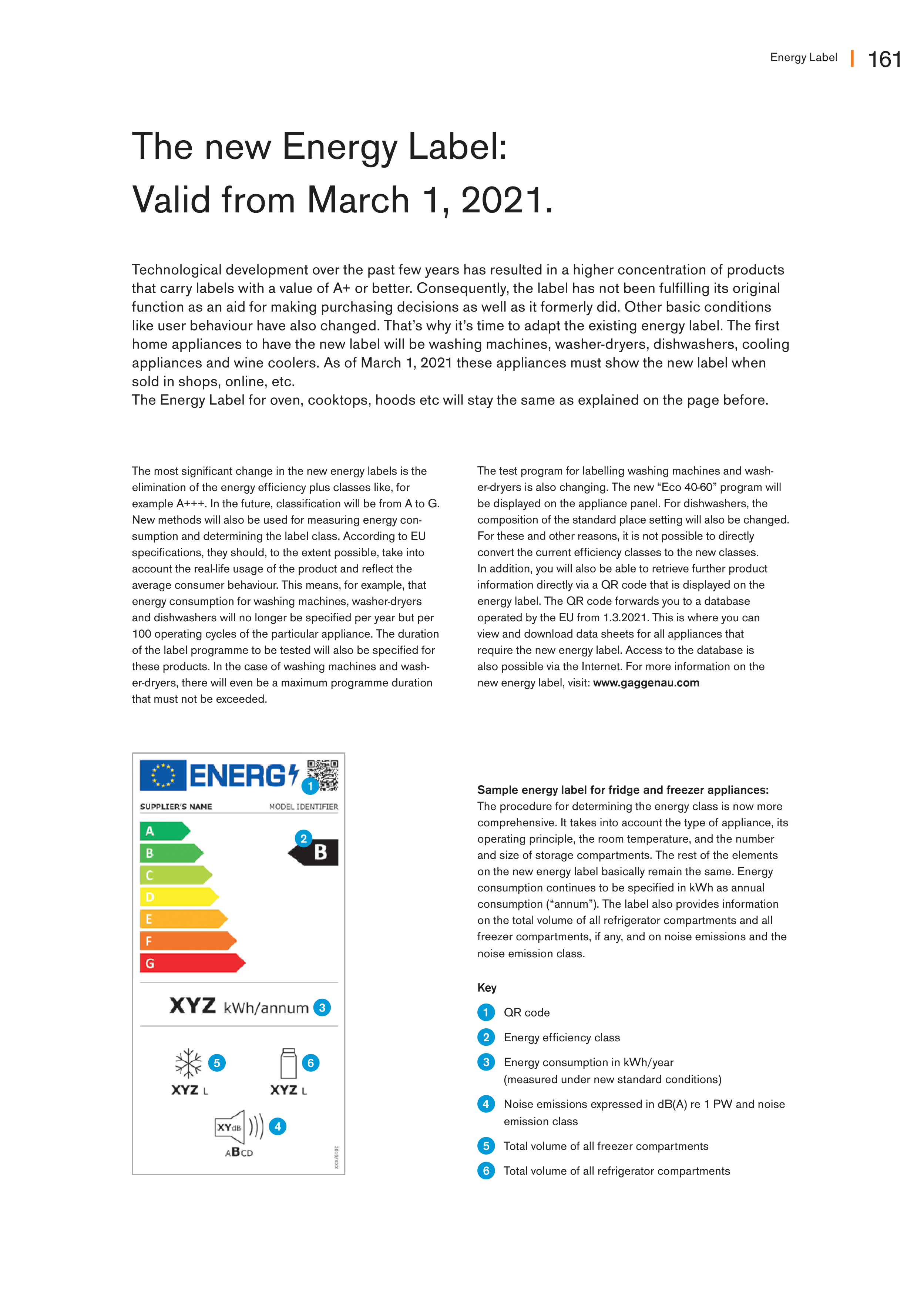161
3
5
6
4
1
2
Energy Label
The most significant change in the new energy labels is the
elimination of the energy efficiency plus classes like, for
example A+++. In the future, classification will be from A to G.
New methods will also be used for measuring energy con-
sumption and determining the label class. According to EU
specifications, they should, to the extent possible, take into
account the real-life usage of the product and reflect the
average consumer behaviour. This means, for example, that
energy consumption for washing machines, washer-dryers
and dishwashers will no longer be specified per year but per
100 operating cycles of the particular appliance. The duration
of the label programme to be tested will also be specified for
these products. In the case of washing machines and wash-
er-dryers, there will even be a maximum programme duration
that must not be exceeded.
The test program for labelling washing machines and wash-
er-dryers is also changing. The new “Eco 40-60” program will
be displayed on the appliance panel. For dishwashers, the
composition of the standard place setting will also be changed.
For these and other reasons, it is not possible to directly
convert the current efficiency classes to the new classes.
In addition, you will also be able to retrieve further product
information directly via a QR code that is displayed on the
energy label. The QR code forwards you to a database
operated by the EU from 1.3.2021. This is where you can
view and download data sheets for all appliances that
require the new energy label. Access to the database is
also possible via the Internet. For more information on the
new energy label, visit: www.gaggenau.com
The new Energy Label:
Valid from March 1, 2021.
Technological development over the past few years has resulted in a higher concentration of products
that carry labels with a value of A+ or better. Consequently, the label has not been fulfilling its original
function as an aid for making purchasing decisions as well as it formerly did. Other basic conditions
like user behaviour have also changed. That’s why it’s time to adapt the existing energy label. The first
home appliances to have the new label will be washing machines, washer-dryers, dishwashers, cooling
appliances and wine coolers. As of March 1, 2021 these appliances must show the new label when
sold in shops, online, etc.
The Energy Label for oven, cooktops, hoods etc will stay the same as explained on the page before.
Sample energy label for fridge and freezer appliances:
The procedure for determining the energy class is now more
comprehensive. It takes into account the type of appliance, its
operating principle, the room temperature, and the number
and size of storage compartments. The rest of the elements
on the new energy label basically remain the same. Energy
consumption continues to be specified in kWh as annual
consumption (“annum”). The label also provides information
on the total volume of all refrigerator compartments and all
freezer compartments, if any, and on noise emissions and the
noise emission class.
Key
1 QR code
2 Energy efficiency class
3 Energy consumption in kWh/year
(measured under new standard conditions)
4 Noise emissions expressed in dB(A) re 1 PW and noise
emission class
5 Total volume of all freezer compartments
6 Total volume of all refrigerator compartments



